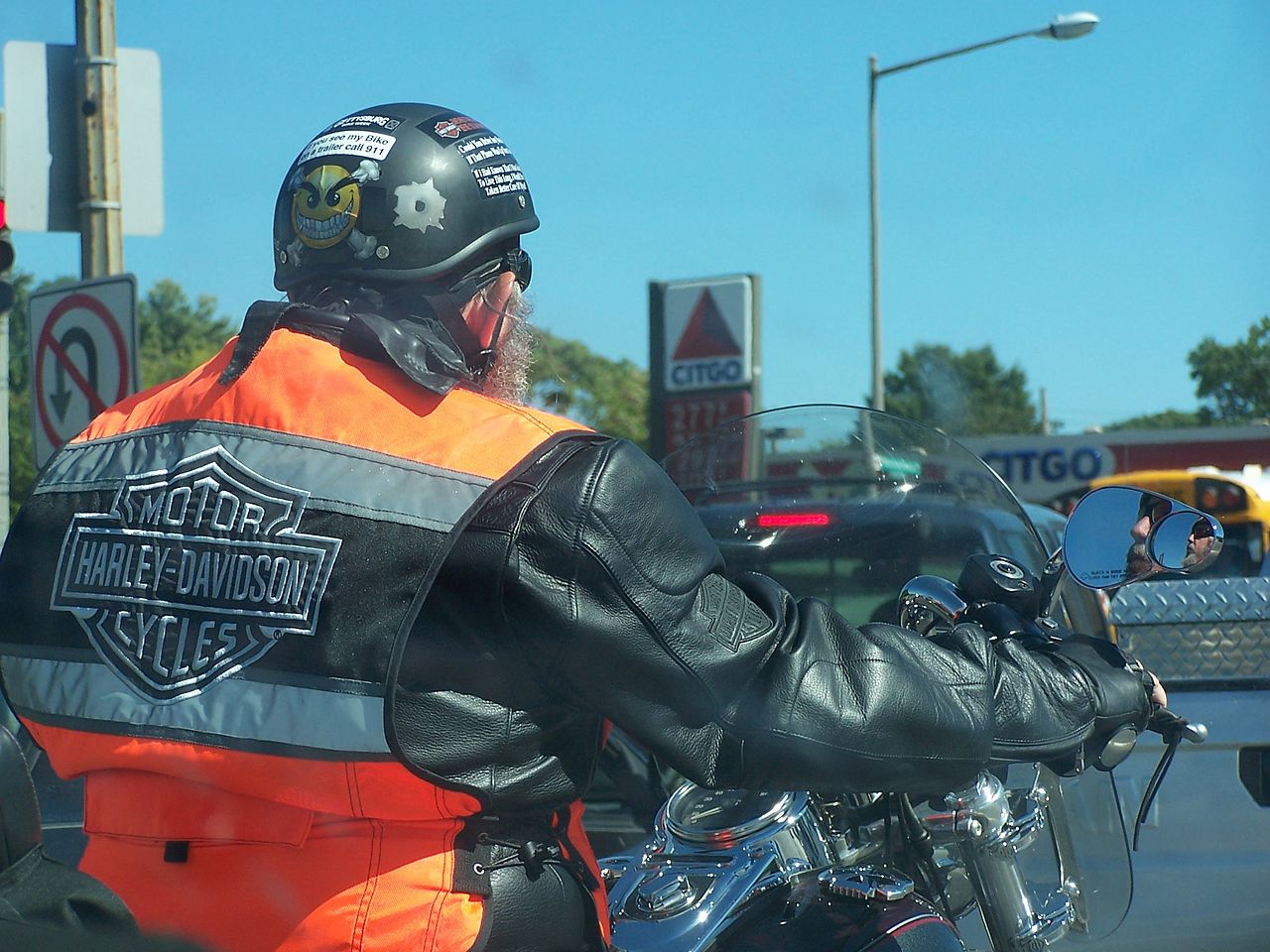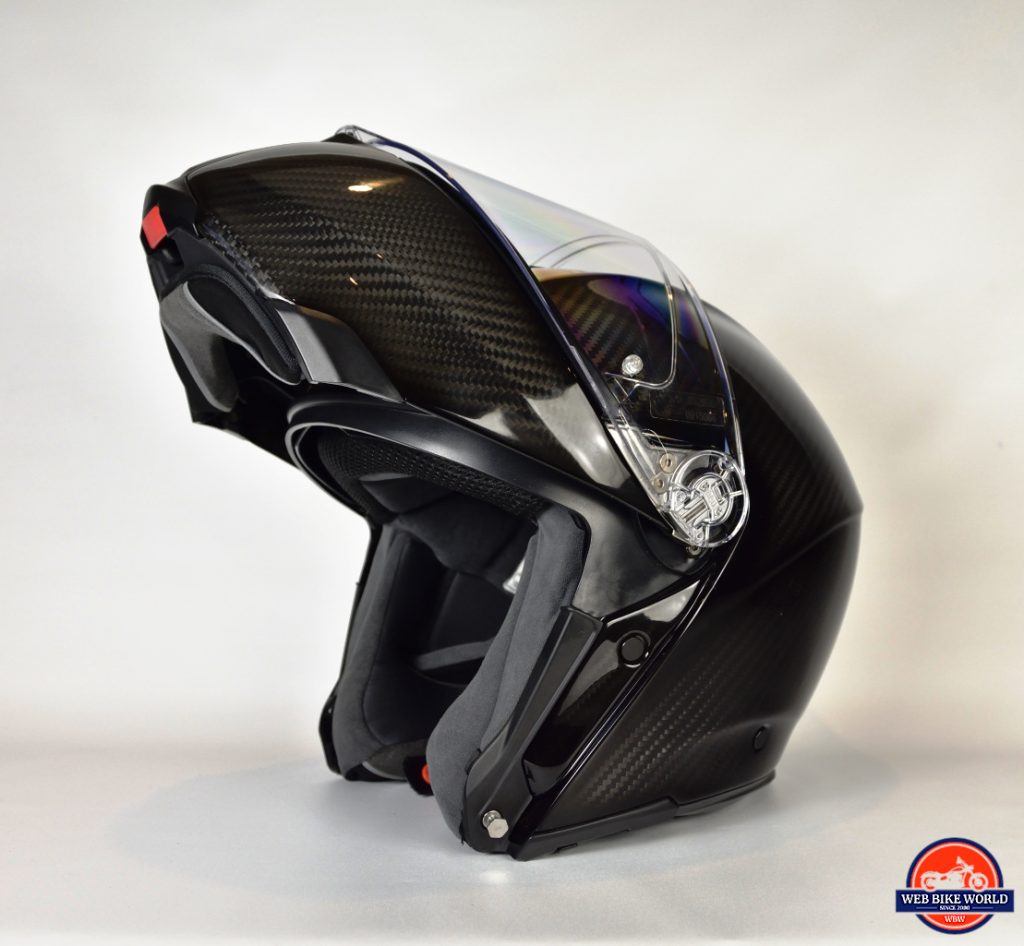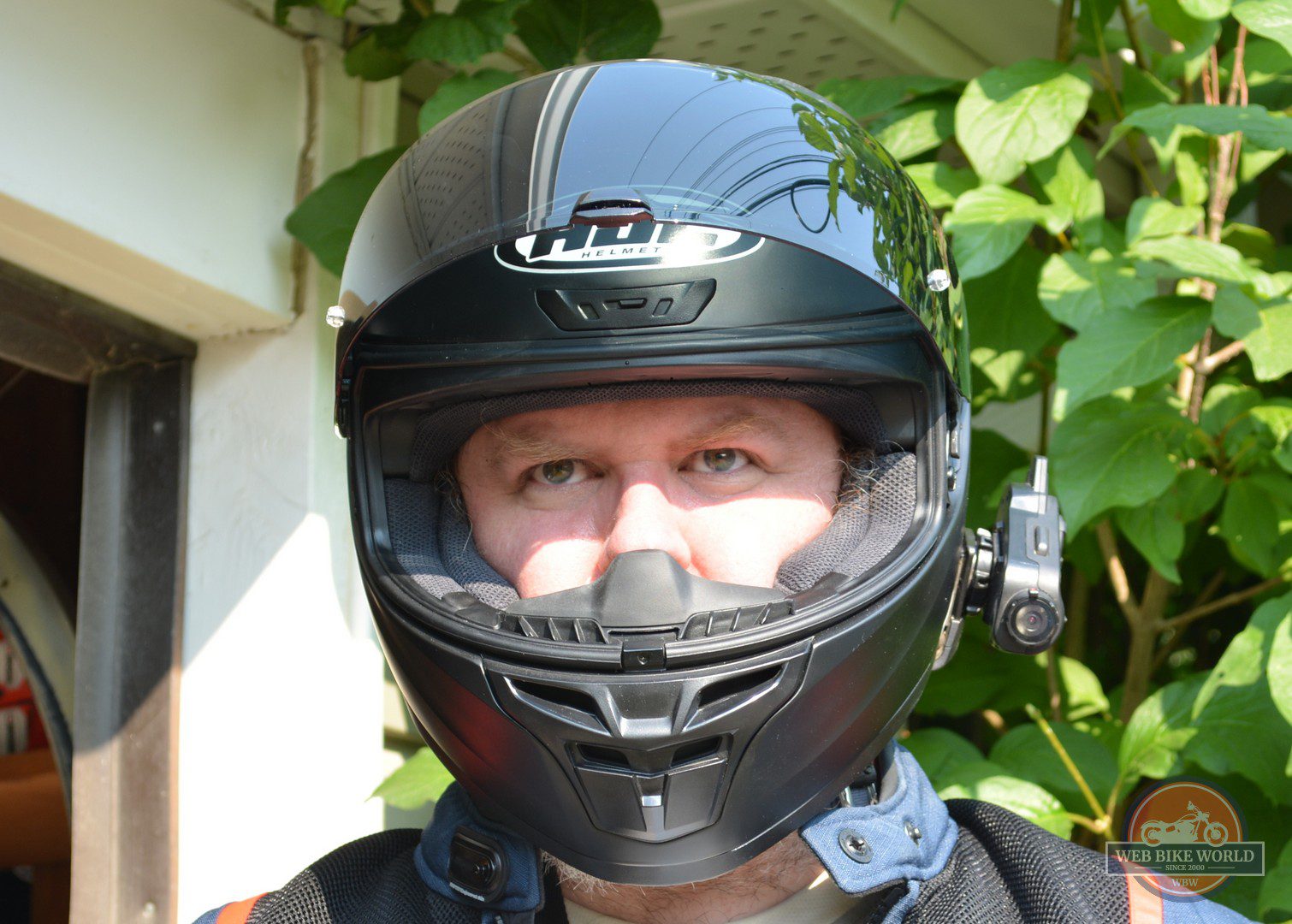There is a lot of discussion among riders about which motorcycle helmet is the best. There are those that will defend the altar of Arai until they are blue in the face, while others will speak no evil about Schuberth or AGV. It is one of those discussions (read: arguments) that will never actually be resolved, because as long as the helmet follows the legal requirements to be considered a motorcycle helmet, there are as many opinions as there are pebbles in a gravel road that an ADV bike will happily cruise down.
What is also equally debated are the types of helmets one can acquire. Some are specifically designed for one type of activity, like motocross/supercross helmets, while others are accepted as helmets that anyone on any bike can ride with. Each type has their flaws, and each type has their benefits, but any helmet is better than no helmet.
We could wax on endlessly about the flaws of each type of helmet out there, but most every rider, new to the hobby or having ridden for 20 years knows what these flaws are. What is not as well known are the benefits of each type of helmet, and how they fit within the legality of personal protective equipment. As such, let’s break down the accepted helmet types and their benefits!
Half Helmet
The perennial favorite of the badass cruiser, the half helmet, or more commonly the brain pan, extends across the top of the head from ear to ear, and along the head from forehead to just above the basilar skull (where the skull and the neck meet). While not as protective of the face as other types of helmets, half helmets are still legal in all the USA and Canada as the minimum required to ride a motorcycle.
The biggest benefit of a half helmet is that when it’s a hot day outside, with the helmet and a nice pair of motorcycle-grade polycarbonate sunglasses, you have an absolute ton of cooling air flowing over your face and neck. Another benefit is that most half helmets weigh a quarter to half of what a regular full face helmet weighs, so there isn’t as much mass to move when you need to do a shoulder check. As well, without having the sides of a normal helmet there, you have excellent peripheral vision.
Extended Half Helmet
Due to legality reasons, in Europe, a half helmet is very hard to get through to the market. It is because of this that some helmet manufacturers have begun to make what are called extended half helmets. Not quite qualifying as a three quarter, these helmets have the half helmet shell, but dip lower on the back of the head, and often even have a skirting that covers the back of the head for weather.

While these helmets are few and far between, an example of one that we here at BadAss like is the Scorpion Covert X Solid. Deemed a “modular,” it doesn’t quite fit the bill for that either as its mask is removable, not flip up, and therefore is not a solid part of the helmet itself. However, as the hard-shell skirting covers the ears and the basilar skull area, and it has a modular chin bar/mask, it squeaks through EU regulations.
The benefits of these types of helmets are mostly the same as a regular half helmet, with the exception that almost all of them will come with drop down polycarbonate sun visors. This makes riding in both the daytime and night time possible, without needing to pack more than a clear pair of motorcycle-grade safety glasses for your ride.
Three Quarter Helmet
The three quarter helmet was, in fact, the second style of helmet introduced in the way-back-time by Bell Helmets. Their very first fiberglass shell helmet was a three quarter, with snap points to put a flat or bubble shield in front of your face. These days, the three quarter helmet is often worn by riders on neo-retro bikes or scooters, with some use on touring bikes due to the easy access to the mouth for sipping water from a hydration backpack.
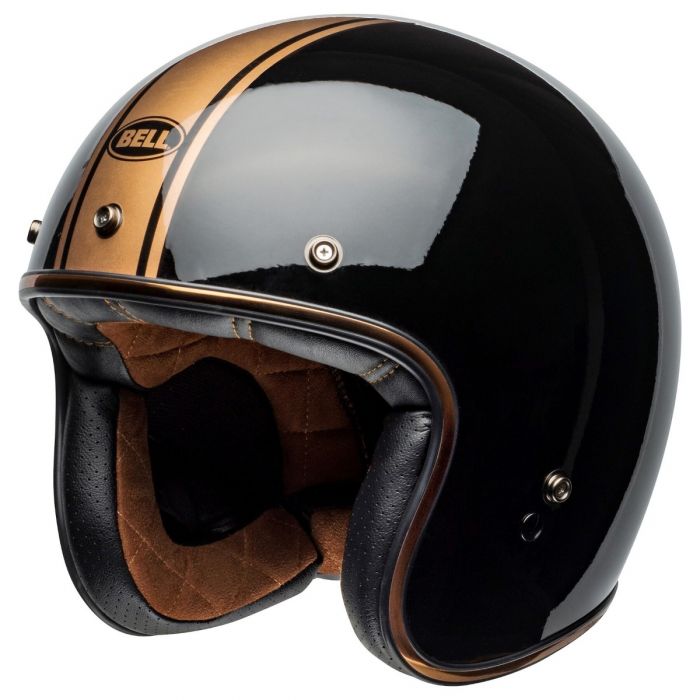
A Bell 500 three quarters helmet. The original Bell helmet was a full face, but one day they cut off the chin bar and the original Bell 500 was the result.
The benefits of the three quarter helmet are, as already stated, easy access to the mouth without needing to remove the helmet. Without a face shield, these helmets are also almost as good at cooling the rider as a half helmet is, but with the ears, jaw hinge, and basilar skull area all fully covered.
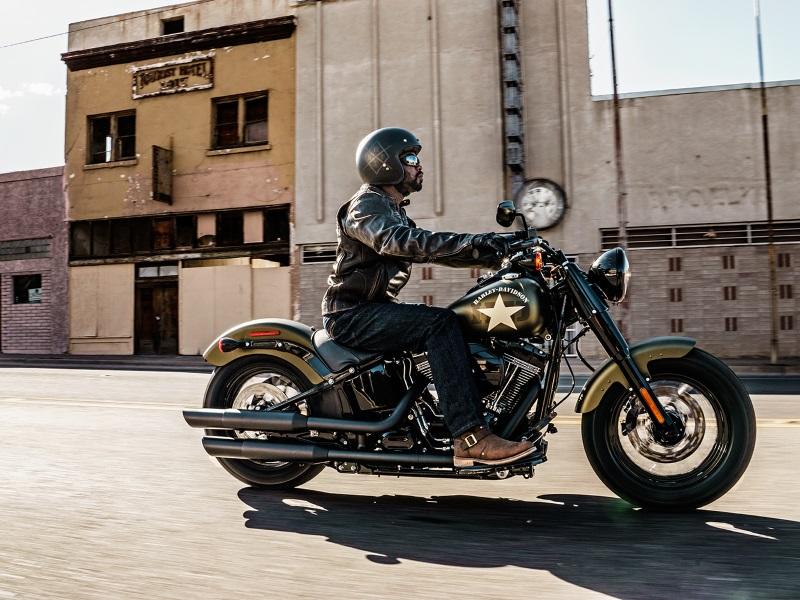
There are limitations to the cooling air that does get to the back of the head, and some three quarter helmets get around this with well hidden air intakes in the crown area of the helmet, between the shell and the EPS/liner. Another benefit of the three quarter helmet is that it also can be considered partially modular, as some have flip up/down full face or half face visors, and other have the aforementioned button snap style of face shield.
However, the biggest benefit to the three quarter helmet is in terms of legality. Some states have helmet laws that are a bit relaxed, such as Oklahoma (to learn more about the legal side of things, more recommended reading here), but the three quarter helmet is accepted, as long as it bears the correct sticker of legality (D.O.T., ECE, et al), as a legal helmet in most, if not all, nations of the world.
Motocross/Supercross/Dirt Helmet
While a motocross/supercross/dirt helmet is, by definition, a full face helmet, it more often than not does not meet road legal requirements. This is because the typical helmet for this style has a projecting chin bar, no visor, and is built to withstand rough handling and angular falls. It is also quite often very porous with ventilation holes, and does not have the rigidity in some parts of the helmet to meet road legal status.
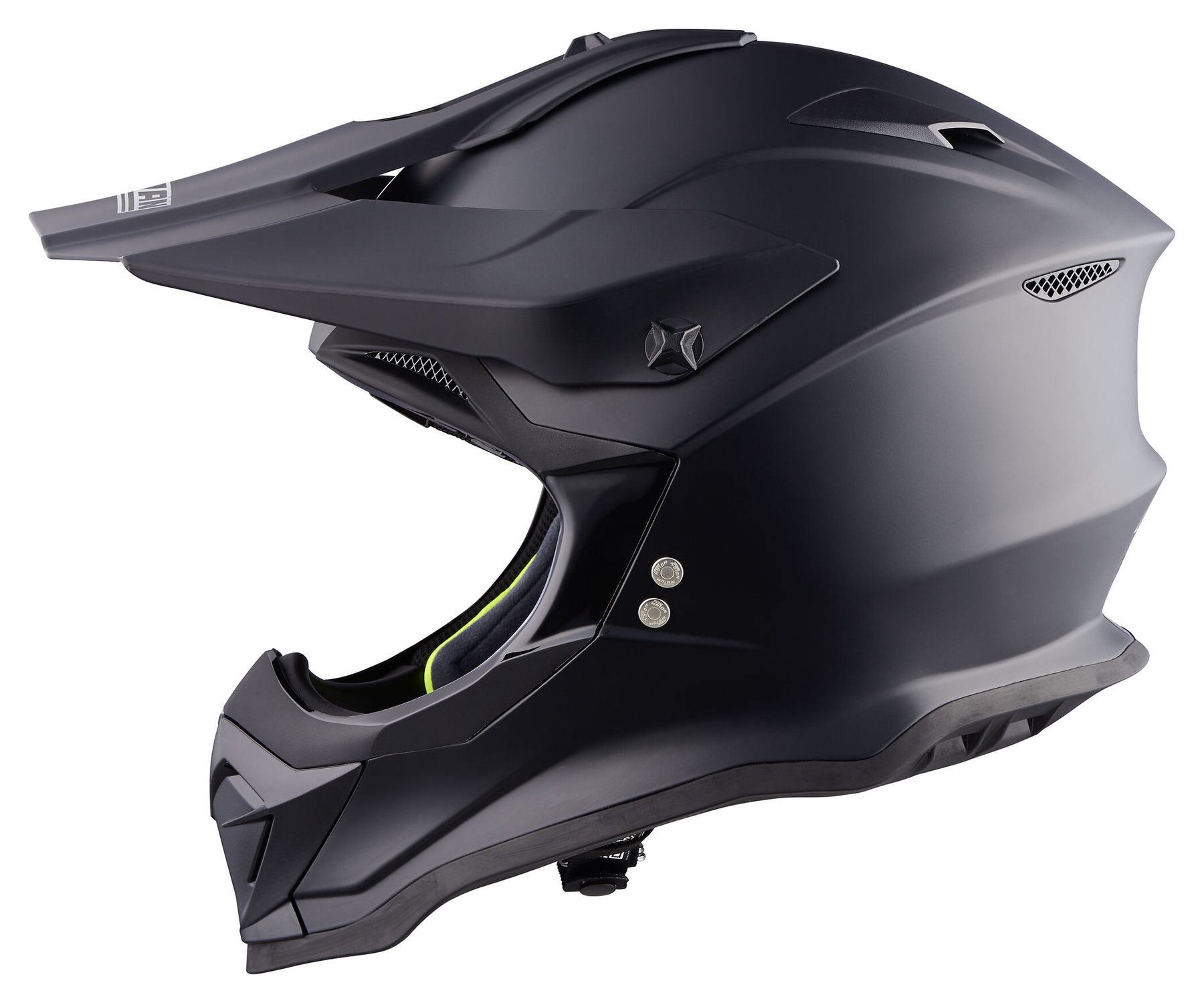
The benefits of these helmets, however, are laser focused on riding off-road. Almost all dirt helmets will have a sun peak, to keep lights and/or the sun out of your eyes as well as dirt and rocks falling from roost from another bike or things falling out of trees, and their eye port is wide enough to accept almost any type of motorcycle google. They are also some of the most ventilated helmets out there, as the expectation is that if you’re riding off road, you’re riding pretty damned hard and manufacturers are expecting you to sweat.
Another benefit is the style of protection these helmets give. There is a good reason the chin bar is projected forwards away from the face, as it protects the rider from roost from another dirt bike, as well as deflects breath away from the goggles, preventing fogging on the outside. Another benefit of the chin bar is that if you are riding through a tight forest section, the chin bar can deflect branches away before they give you a nasty smack in the face or neck.
Modular Full Face
The second most common type of helmet worn, a modular full face helmet bridges together benefits of two helmet types, the three quarters and the solid full face. In terms of the three quarters helmet, the modular style helmet allows for the chin bar and visor to be raised out of the way, allowing for easy access to the mouth. You can talk to someone, take a drink from your hydration pack, and pretty much anything else a three quarters helmet lets you do, without needing to take off your helmet.
The fully carbon fiber AGV SportModular. We reviewed it on our sister site, webBikeWorld, a few years back
Where the modular helmet gets a bit fuzzy in terms of legality is that in 95% of cases, a modular helmet is not rated for riding with the chin bar up. There are a few that are designed specifically to be leg as both a full face and a three quarters, with the chin bar either tucking all the way behind the helmet, or rated to be ridden with it open to a certain speed, but these helmets are rare and often a little pricier due to the extra testing needed to meet road legality.
However, with the chin bar down and secured, except in the most disastrous of catastrophic crashes, the modular helmet acts the same as a full face. You have full head protection, chin and face protection, and more often than not, these helmets also have drop down sun visors that negate the need for sunglasses. In fact, the only area where these helmets are not accepted as legal is in powersports events such as track days and races.
Solid Full Face
The most common type of helmet on the market is the full face helmet. Full protection for the head, face, chin, basilar region, and even on some helmets the front of the neck. The benefits of these helmets are so numerous, that it would take a full article on its own to describe every single one. Instead, we’ll point out the three most prominent.
As stated above, a solid full face helmet offers the most protection of all the helmet types. There is realistically no impact angle that isn’t covered, as long as the chin strap is correctly done up. As there is no need to trim the EPS foam to allow for a modular chin bar, the protective foam in these helmets is very often one, sometimes two pieces total, giving a very strong and very large impact absorption area.
Your friendly neighborhood writer of this article in his HJC i10 full face helmet.
The second biggest benefit of these helmets is in terms of aerodynamics. Unless there is a massive and obvious bit of the helmet sticking out into the air, these helmets are on the average quieter than most other types of helmets, and aren’t bounced around by the wind as much. As well, as there is no modular seam, there is no possibility of an aerodynamic break happening that can cause a high pitched whistling sound.
The last most prominent benefit of a full face is legality. A full face helmet, except in two situations that we will discuss, is considered the de facto standard across the entirety of the Earth. Every nation that has a helmet law, as long as the helmet meets the requirements of that nation, will not even look twice at a rider wearing a full face.
ADV Competition Helmets
One of the two areas where there is a bit of a special rule for helmets is in adventure helmets, or ADV helmets. While a road-going ADV helmet that is off-road capable is classed together with a full face helmet, there is one area where a helmet must meet special regulations. That area is off-road rallying, or adventure racing.
The most famous of these rallies is the Dakar Rally, where specially prepared adventure bikes and riders will spend the better part of a week out in a treacherous, completely off-road course. In these situations, a helmet will resemble a dirt-style helmet, but the chin bar is much closer to the face, and can be worn with either goggles or a visor. In these cases, the helmet must meet the much-stricter-than-road-legal homologation requirements of the Federation Internationale de Motocyclisme, the same governing body that oversees track racing.
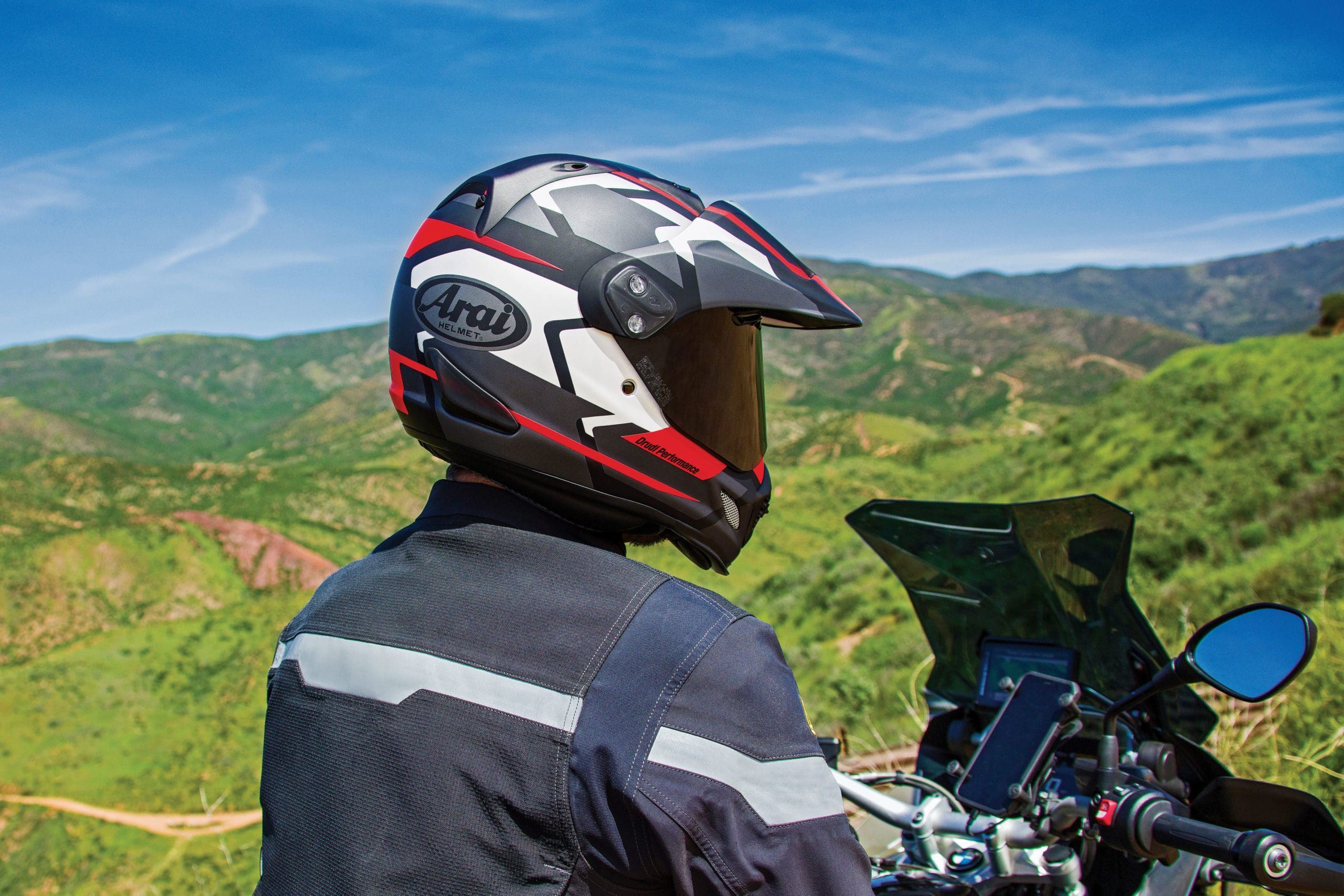
Image courtesy of Arai Americas. The XD4 in all its glory, on the head of an ADV rider.
An example of a helmet that is approved for use on the road, off-road, and in rally racing is the Arai XD4. This passes on the benefit of having a race-quality helmet, with excellent ventilation, proven, certified protection, and the ability to use it pretty much anywhere. It also has the benefit of meeting or exceeding most nations’ legality requirements for helmets.
Sport/Race/Track Helmets
The second of the two special areas of full face helmets are helmets that are used for track days or races. Apart from other gear requirements, in the USA a helmet must have passed the SNELL M2015 or M2020 tests to be certified for use for a track day. In the EU, the helmet must either carry a FIM homologation code, or meet ECE regulations for track use.
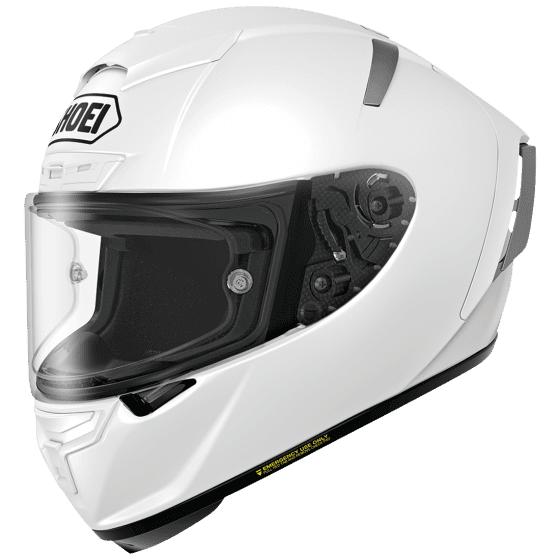
For racing helmets, it is quite common for it to be custom fit to the rider, and carry an FHRPe rating that denotes it as an FIM homologation helmet. The regulations for these helmets are extremely strict, and include tests done at higher velocities, and different impact angles, than even SNELL uses in their tests. The biggest area that the FIM focuses on is rider protection, so you will often find chin bars that dip lower than the average full face, to protect the front of the neck as well as give better aerodynamics, as well as multilayer, multi-density EPS foam, and padding that is tight but comfortable.
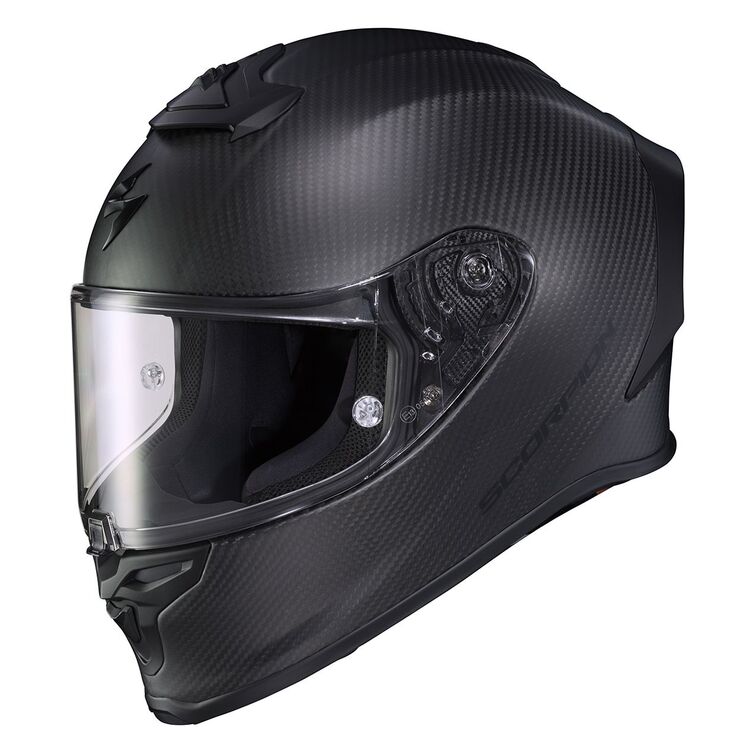
An example of a helmet that brings all the benefits of a race-proven helmet to the street is the Scorpion EXO-R1. The EXO-R1 shell and liner is the same as the one in the Scorpion EXO-R1 FIM Racing, however it has reworked internal padding to make it more street friendly. The benefits passed on to the street rider are excellent airflow, a very robust shell, excellent impact absorption, superb aerodynamics, and a massive visor port to give you the best view no matter if you are sitting up or tucked low to the tank.


